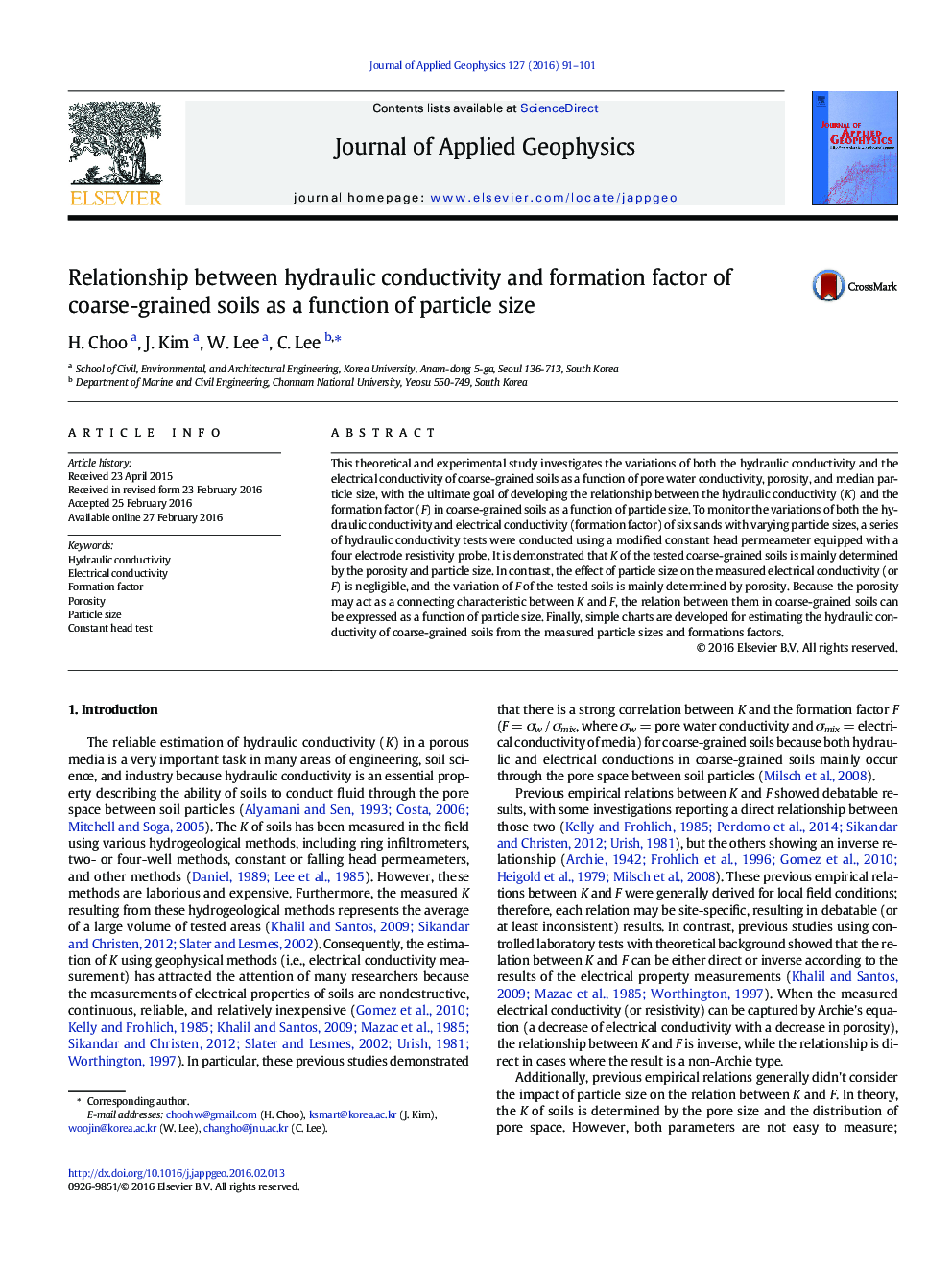| Article ID | Journal | Published Year | Pages | File Type |
|---|---|---|---|---|
| 4739774 | Journal of Applied Geophysics | 2016 | 11 Pages |
•Hydraulic conductivity (K) and formation factor (F) of varying sands were measured.•Theoretical and experimental relation between K and F was reviewed.•The relationship between K and F is not unique, but is a function of particle size.•At a given particle size, there is an inverse relationship between K and F.•Simple charts for estimating K of sands from particle sizes and F are suggested.
This theoretical and experimental study investigates the variations of both the hydraulic conductivity and the electrical conductivity of coarse-grained soils as a function of pore water conductivity, porosity, and median particle size, with the ultimate goal of developing the relationship between the hydraulic conductivity (K) and the formation factor (F) in coarse-grained soils as a function of particle size. To monitor the variations of both the hydraulic conductivity and electrical conductivity (formation factor) of six sands with varying particle sizes, a series of hydraulic conductivity tests were conducted using a modified constant head permeameter equipped with a four electrode resistivity probe. It is demonstrated that K of the tested coarse-grained soils is mainly determined by the porosity and particle size. In contrast, the effect of particle size on the measured electrical conductivity (or F) is negligible, and the variation of F of the tested soils is mainly determined by porosity. Because the porosity may act as a connecting characteristic between K and F, the relation between them in coarse-grained soils can be expressed as a function of particle size. Finally, simple charts are developed for estimating the hydraulic conductivity of coarse-grained soils from the measured particle sizes and formations factors.
